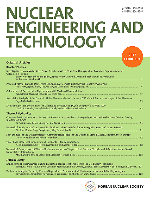
Nuclear Engineering and Technology
Scope & Guideline
Advancing the Future of Nuclear Energy
Introduction
Aims and Scopes
- Nuclear Reactor Design and Safety:
Research on the design, analysis, and safety protocols of nuclear reactors, including advanced reactor concepts and safety assessment methodologies. - Radiation Protection and Dosimetry:
Studies focused on radiation shielding, dosimetry techniques, and the health effects of radiation exposure on workers and the public. - Nuclear Waste Management:
Innovative approaches for the treatment, storage, and disposal of nuclear waste, including waste form development and environmental impact assessments. - Nuclear Fuel Cycle and Materials:
Research on the behavior and performance of nuclear fuels, including studies on fuel fabrication, irradiation effects, and materials science related to nuclear applications. - Thermal-Hydraulics and Fluid Dynamics:
Investigations into fluid flow and thermal behavior within nuclear systems, including passive safety systems and heat transfer mechanisms. - Computational Modeling and Simulation:
Development and application of computational tools and methodologies, such as Monte Carlo simulations and finite element analysis, for nuclear engineering problems. - Emergency Preparedness and Response:
Research on emergency response strategies, probabilistic safety assessments, and risk management associated with nuclear power plants. - Public Perception and Policy:
Exploration of societal attitudes toward nuclear energy, policy implications, and strategies for public engagement in nuclear issues.
Trending and Emerging
- Advanced Reactor Technologies:
A significant increase in research related to small modular reactors (SMRs), molten salt reactors, and other innovative designs that promise enhanced safety and efficiency. - Artificial Intelligence and Machine Learning:
Growing interest in applying AI and machine learning techniques to optimize reactor performance, enhance safety analysis, and improve predictive maintenance in nuclear facilities. - Sustainability and Environmental Impact:
Research focusing on the sustainability of nuclear power, including life cycle assessments, carbon emissions, and the role of nuclear energy in achieving climate goals. - Digitalization and Automation in Nuclear Facilities:
Emerging studies exploring the integration of digital technologies, IoT, and automation in nuclear plant operations and maintenance processes. - Cybersecurity in Nuclear Facilities:
Increased research on protecting nuclear facilities from cyber threats, emphasizing the importance of secure digital infrastructure. - Public Engagement and Risk Communication:
A rising trend in understanding public perceptions of nuclear energy and developing effective communication strategies for stakeholders.
Declining or Waning
- Conventional Nuclear Reactor Technologies:
Research on traditional reactor designs, such as PWR and BWR, has decreased as the focus shifts toward advanced reactor concepts and safety innovations. - Low-Level Radioactive Waste Management:
While still important, the frequency of publications related to low-level waste management has declined, possibly due to advancements in treatment technologies and regulatory frameworks. - Nuclear Power Plant Operations:
Studies specifically focused on operational aspects of existing nuclear plants have decreased as more emphasis is placed on new technologies and safety enhancements. - Historical Perspectives on Nuclear Energy:
Research examining the historical context and development of nuclear technologies has waned in favor of more forward-looking studies on innovation and future applications.
Similar Journals

ATOMIC ENERGY
Shaping the future of energy through atomic insights.ATOMIC ENERGY is a distinguished journal published by SPRINGER, focusing on pivotal advancements and research within the field of Nuclear Energy and Engineering. With an ISSN of 1063-4258 and an E-ISSN of 1573-8205, this journal has been a critical resource since its inception in 1956, serving both historic and contemporary scientific inquiries into nuclear technologies. Currently positioned in Q3 of the Nuclear Energy and Engineering category, ATOMIC ENERGY ranks 49 out of 77 in Scopus, representing a percentile of 37%, highlighting its relevance in the research community. While it is not an open access journal, it continues to draw a diverse readership eager to engage with the latest findings and innovations in nuclear science. The journal’s objectives include fostering collaborative research, sharing expertise, and addressing contemporary challenges in nuclear energy. As such, ATOMIC ENERGY remains an essential platform for researchers, professionals, and students alike, contributing significantly to the ongoing dialogue in the field.

JOURNAL OF RADIOANALYTICAL AND NUCLEAR CHEMISTRY
Bridging science and safety through open access research.JOURNAL OF RADIOANALYTICAL AND NUCLEAR CHEMISTRY, published by Springer, serves as a vital platform for the dissemination of research in the fields of analytical chemistry, nuclear science, and radiochemistry. With an ISSN of 0236-5731 and an E-ISSN of 1588-2780, this journal has been a beacon of innovation and scholarly communication since its inception, transitioning from converged years of 1977-1979 to its current continuity from 1984 to 2024. Positioned in the Q3 category for analytical chemistry and other related fields such as health, toxicology, and nuclear engineering, it boasts significant standings in the Scopus rankings, reflecting its relevance and impact within these disciplines. The journal emphasizes open access, encouraging broader accessibility to quality research, which is critical for students, professionals, and ongoing global scientific discussions. As a leader in its domain, the JOURNAL OF RADIOANALYTICAL AND NUCLEAR CHEMISTRY is committed to advancing the understanding of radioactive materials, environmental safety, and health applications, ensuring its readers remain at the forefront of emerging trends and discoveries.
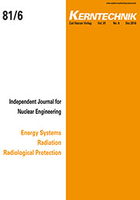
KERNTECHNIK
Fostering collaboration for a sustainable nuclear future.KERNTECHNIK is a distinguished journal specializing in the fields of Materials Science, Nuclear and High Energy Physics, and Nuclear Energy and Engineering. Published by WALTER DE GRUYTER GMBH, this journal has continuously contributed to advancing knowledge and research in nuclear technologies and related safety measures since its inception in 1969. With an ISSN of 0932-3902 and an E-ISSN of 2195-8580, KERNTECHNIK serves as a vital platform for academics and professionals seeking to delve into both theoretical and practical aspects of nuclear science and technology. Though listed in the Q4 quartile across multiple categories in 2023, the journal's commitment to publishing rigorously peer-reviewed articles ensures that it remains a respected resource, facilitating academic discourse and innovation. It is particularly aligned for those conducting research or working in safety, risk, reliability, and quality within the nuclear sector, and its extensive historical archive allows for in-depth exploration of evolving technologies. Aimed at foster cooperation between researchers, policymakers, and industry experts globally, KERNTECHNIK continues to play an important role in shaping the future of nuclear science.
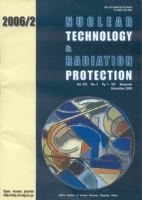
Nuclear Technology & Radiation Protection
Elevating standards in radiation protection and technology.Nuclear Technology & Radiation Protection is a distinguished open-access journal published by the VINCA Institute of Nuclear Sciences, Serbia, dedicated to advancing knowledge in the fields of nuclear energy and radiation safety. Since its inception in 2002, the journal has been an essential resource for researchers, professionals, and students, offering a platform for the dissemination of high-quality research that contributes to the safe and efficient use of nuclear technology. With an impressive Q2 ranking in both the Nuclear Energy and Engineering and Safety, Risk, Reliability and Quality categories for 2023, the journal reflects a commitment to excellence and relevance within its scope. It serves as a pivotal forum for sharing innovative findings, addressing current challenges, and contributing to the global discourse on nuclear safety and technology. The journal is indexed in Scopus, enhancing its visibility and impact in the academic community. By facilitating unrestricted access to its articles, Nuclear Technology & Radiation Protection continues to foster collaboration and engagement among scholars in the nuclear science domain.
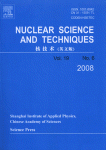
Nuclear Science and Techniques
Transforming Insights into Nuclear ApplicationsNuclear Science and Techniques is a distinguished peer-reviewed journal published by Springer Singapore Pte Ltd, dedicated to advancing the fields of nuclear science and engineering. With an impressive impact factor reflected in its 2023 quartile rankings—Q2 in Nuclear and High Energy Physics and Q1 in Nuclear Energy and Engineering—the journal serves as a vital resource for researchers, professionals, and students alike. Covering a breadth of topics from nuclear physics to energy applications, it offers a platform for innovative research and developments in the nuclear domain. The journal, indexed under ISSN 1001-8042 and E-ISSN 2210-3147, aims to foster scientific exchange and collaboration within the community by publishing high-quality articles that contribute significantly to the field. Committed to maintaining an open-access ethos, it enhances visibility and accessibility of critical knowledge, making it an essential source for current insights and trends in nuclear science.

Nuclear Materials and Energy
Fostering Collaboration in Cutting-edge Nuclear ResearchNuclear Materials and Energy is a premier open-access journal published by Elsevier, dedicated to the dynamic fields of nuclear science and materials engineering. Since its inception in 2015, the journal has made significant strides in disseminating cutting-edge research, establishing itself as a vital resource for researchers and professionals alike. With a commendable impact factor and ranked in the Q2 category for both Materials Science (miscellaneous) and Nuclear and High Energy Physics, and impressively in Q1 for Nuclear Energy and Engineering in 2023, Nuclear Materials and Energy stands out in the academic community. This journal aims to bridge the gap between fundamental research and practical applications, promoting innovative solutions in the efficient utilization of nuclear materials and energy technologies. Open access since 2015, the journal ensures wide dissemination and accessibility of crucial findings, making it an essential platform for advancing knowledge and fostering collaboration in these pivotal fields.

Radiation Detection Technology and Methods
Fostering Excellence in Radiation Detection TechnologyRadiation Detection Technology and Methods is a prominent academic journal published by Springer Singapore Pte Ltd, dedicated to advancing the field of nuclear and high-energy physics, as well as nuclear energy and engineering. Established in 2017, this journal provides a platform for the dissemination of pioneering research and innovative methodologies in radiation detection technology. As of 2023, it holds a commendable Q2 ranking in both the categories of Nuclear and High Energy Physics and Nuclear Energy and Engineering, underscoring its significance in fostering scholarly discourse within these vital fields. With ISSN 2509-9930 and E-ISSN 2509-9949, the journal aims to cater to a diverse audience of researchers, professionals, and students, emphasizing open access to knowledge. The journal's contributions are particularly crucial for those engaged in the development of safer and more efficient radiation detection techniques, ultimately bridging the gap between theory and practical applications in energy security and health physics. For researchers seeking a dedicated outlet for their work, Radiation Detection Technology and Methods represents an invaluable resource and an opportunity to influence the future of radiation science.
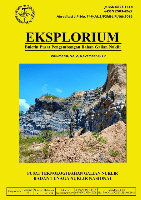
Eksplorium-Buletin Pusat Teknologi Bahan Galian Nuklir
Advancing Nuclear Knowledge for a Sustainable FutureEksplorium-Buletin Pusat Teknologi Bahan Galian Nuklir is a pivotal open-access journal dedicated to the field of nuclear material technology, published by the Pusat Teknologi Bahan Galian Nuklir-BATAN. Since its inception in 2011, this journal has been committed to disseminating high-quality research that explores advancements in the utilization and management of nuclear materials, ensuring that vital knowledge is accessible to researchers, professionals, and students globally. With an ISSN and E-ISSN of 0854-1418, Eksplorium serves as a valuable platform for contributors looking to share their findings, fostering collaboration and innovation in a field that is increasingly relevant to energy sustainability and environmental safety. Situated in Jakarta, Indonesia, this journal not only enhances the scientific landscape but also champions open access principles to promote the global exchange of knowledge.
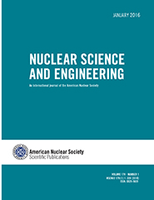
NUCLEAR SCIENCE AND ENGINEERING
Empowering Research in Nuclear Energy and EngineeringNUCLEAR SCIENCE AND ENGINEERING, published by Taylor & Francis Inc, is a leading journal in the field of nuclear energy and engineering, providing a vital platform for disseminating cutting-edge research and advancements from both academia and industry. With an ISSN of 0029-5639 and an E-ISSN of 1943-748X, the journal boasts a notable impact factor and is categorized in the Q2 quartile for 2023, reflecting its influence and quality in the field. Covering a comprehensive scope from the inception of nuclear technology in 1969 to contemporary advancements forecasted for 2024, it ranks #38 out of 77 in the Scopus Energy – Nuclear Energy and Engineering category, placing it in the 51st percentile. Although the journal is not open access, it remains essential for researchers, professionals, and students seeking to stay abreast of the latest developments and innovations in nuclear science. Located in the heart of Philadelphia, NUCLEAR SCIENCE AND ENGINEERING contributes significantly to the advancement of nuclear engineering knowledge and practice, making it a crucial resource for anyone involved in this dynamic field.

ATW-INTERNATIONAL JOURNAL FOR NUCLEAR POWER
Shaping the Future of Nuclear Power GenerationATW - International Journal for Nuclear Power is a premier journal dedicated to advancing the understanding and application of nuclear technology within the energy sector. Published by INFORUM Verlags-Verwaltungsgesellschaft mbH, this esteemed publication provides a platform for researchers, professionals, and students to disseminate cutting-edge research, practical applications, and critical analyses related to nuclear power generation. Although it has discontinued coverage in Scopus since 2012, its long-standing contributions to the field since 1996 underscore its significance and relevance. The journal aims to bridge the gap between theoretical insights and real-world applications, ensuring that stakeholders are well-informed on the latest trends, safety protocols, and innovations in nuclear power. With a commitment to fostering knowledge dissemination and collaboration, ATW continues to be an essential resource for anyone involved in the nuclear energy landscape.